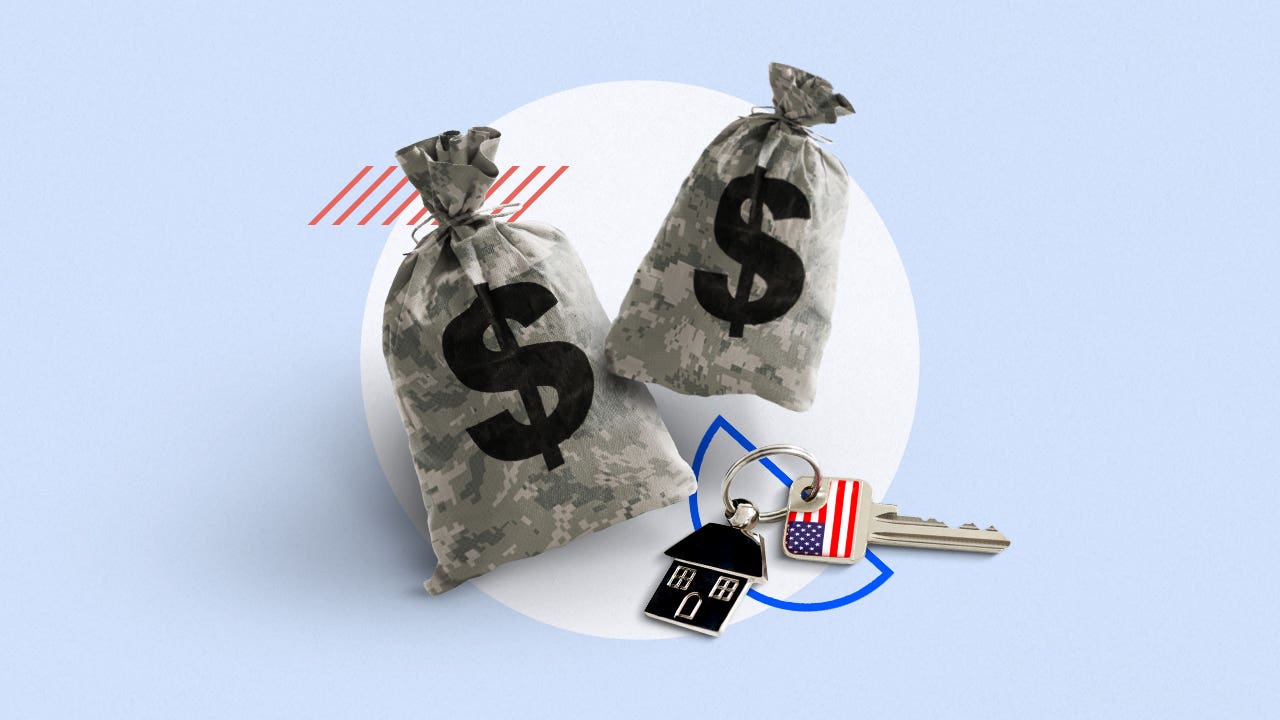How many VA loans can you have?




Key takeaways
- It’s possible to obtain multiple VA loans over time, or more than one at the same time, based on your VA entitlement amount and the lender’s qualifying standards.
- You might use another VA loan to buy a new or additional property, or to refinance an existing loan.
- Even with multiple VA loans, you can only use this type of mortgage to buy a primary residence. You can’t use it to buy an investment or rental property.
Can you have two VA loans at once?
Yes. If eligible, you can have two VA loans at once, or take out multiple VA loans over time. Here are a few situations when this might happen:
- Selling your current home that was purchased with a VA loan and buying a new one with a new VA loan
- Refinancing an existing VA loan to a new VA loan
- Renting your current home that was purchased with a VA loan and buying a new one with a new VA loan, typically as a result of a Permanent Change of Station (PCS) order
- Buying a new home with a new VA loan after defaulting on a previous VA loan
Scenarios that might require another VA loan
Selling your current home and buying a new one
If you’ve already purchased a home with a VA loan, then sell that property, you’ll restore your VA entitlement, the amount that helps determine whether you can get a VA loan for no money down. You can continue to obtain VA loans over time as you sell and move, provided you satisfy the previous VA loan and are eligible for a new loan from a credit and financial standpoint.
Refinancing a VA loan to another one
You might decide to refinance an existing VA loan to a new VA loan to get a lower interest rate, change the loan term, take cash out or a combination. When you refinance an existing loan to a new one, you’ll use the new one to pay off the balance of the former.
Having VA loans on two properties
This most often occurs when an active-duty service member receives a Permanent Change of Station (PCS) order and decides to rent their current home while buying a new one in their new location. This scenario still requires adequate entitlement, as well as the ability to afford both loans.
However, you won’t be able to apply the rental income to your debt-to-income (DTI) ratio on the new loan application, says Yvette Clermont, branch manager with Waukesha, Wisconsin-based Novus Home Mortgage.
However, “that rental income may help offset your mortgage payment, helping you qualify for the second VA loan,” Clermont says.
Buying another home after foreclosure
If you defaulted on a VA loan in the past and the home was foreclosed, it’s still possible to obtain a VA loan again in the future. You’ll need to wait two years before re-applying, however, and you won’t have the full entitlement amount unless you repay the outstanding debt.
What is VA loan entitlement?
VA loan entitlement is the amount of money the U.S. Department of Veterans Affairs (VA) guarantees for a VA loan. This is what allows borrowers to take out VA loans with no down payment.
Depending on your history with VA loans, you might have full or partial entitlement:
- Full entitlement: You have full entitlement if you’ve never previously purchased a home using a VA loan, paid off a prior home with a VA loan and sold that property, or had a home with a VA loan foreclosed or short-sold but fully repaid the loan. With full entitlement, you don’t need to make a down payment, and there are no VA loan limits.
- Partial, reduced or remaining entitlement: If you have an active VA loan and are applying for a second, you have partial entitlement. Your remaining entitlement depends on the percentage of the allowed entitlement you’ve already used with an active loan. You’ll also be bound by loan limits. “If you have partial entitlement, your maximum loan amount is based on the conforming loan limit for your county,” Clermont says. “The VA will guarantee up to 25 percent of the loan limit minus any entitlement you’ve already used. If the purchase price exceeds that, you may need to make a down payment to cover the difference.”
Restoring VA mortgage entitlement
You can restore your VA mortgage entitlement by selling your home and paying off the VA loan in full. If you refinance your loan or pay it off, but still own the home, the entitlement amount remains tied up in the property.
There’s one exception, however: You can request a one-time restoration of entitlement benefit even if you’ve not met the VA’s payoff rule if you’re selling your home to another eligible veteran who’s assuming your VA loan.
“You can ask this person to substitute his or her entitlement for the same amount of entitlement you originally used,” Clermont says. “If they agree, your original entitlement will be restored.”
Why we ask for feedback Your feedback helps us improve our content and services. It takes less than a minute to complete.
Your responses are anonymous and will only be used for improving our website.
You may also like


How many car loans can you have at once?


How many personal loans can you have at once?
